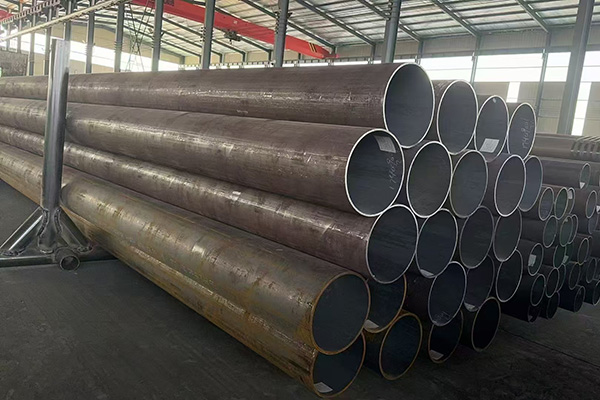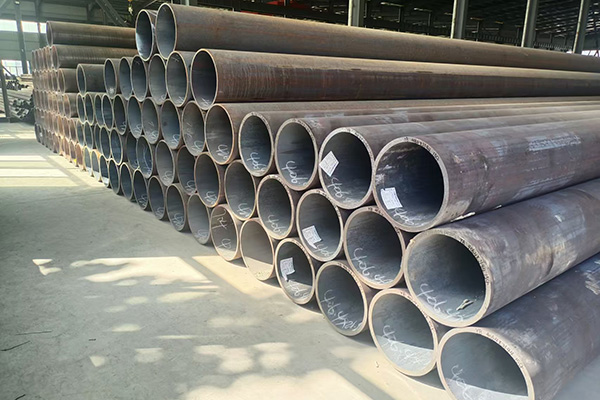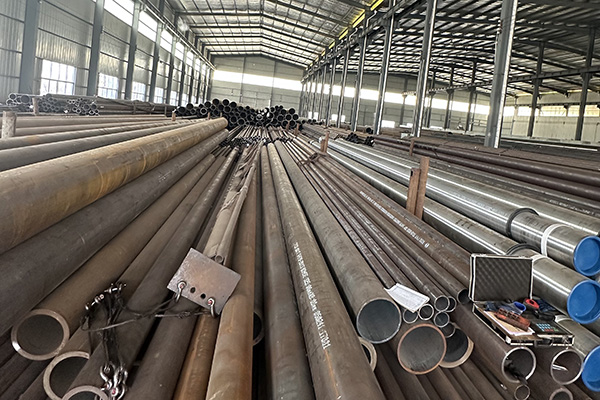
In high-pressure boiler systems, Seamless Boiler Tube stands as the silent guardian of safety and performance. These tubes channel pressurized water and steam within power plants, refineries, and industrial facilities—enduring heat, stress, and corrosion that few materials can withstand.
The seamless structure offers consistent wall thickness and eliminates weak welded joints, ensuring superior durability. With increasing demand for energy efficiency and plant reliability, China manufacturers have taken the lead in offering bulk supply of seamless boiler tubes, tailored to meet strict international standards.


1. Why Seamless Boiler Tubes Are Critical for High-Pressure Systems
Boiler systems convert water into high-temperature steam, which powers turbines and process equipment. Under such conditions, the tubing must resist deformation, oxidation, and sudden pressure changes.
The Seamless Boiler Tube achieves this through a one-piece design—rolled and heat-treated to deliver uniform strength across its entire length. This makes it ideal for:
·Power generation: superheaters, economizers, reheaters
·Petrochemical refining: heat transfer and reboiler systems
·Industrial boilers: high-efficiency steam circulation
Its leak-free design provides enhanced safety and reduced maintenance downtime, both crucial for continuous operations.
2. International Material Standards
The performance of a Seamless Boiler Tube depends on its composition and adherence to internationally recognized standards that dictate chemical, mechanical, and thermal properties.
Widely Used Grades:
·ASTM A192 / A179: For low- and medium-pressure boilers
·ASTM A210 / A213: For alloy steel tubes in high-pressure systems
·EN 10216 / DIN 17175: European standards for seamless steel under elevated service
Each specification governs tensile strength, carbon content, elongation, and wall tolerance. These parameters ensure consistent quality regardless of where the tubes are produced.
Material Characteristics:
·Resistance to pressure-induced deformation
·Stability under prolonged high temperatures
·Compatibility with protective coatings for corrosion defense
When produced correctly, seamless boiler tubes deliver optimal heat exchange with minimal energy loss.
3. Manufacturing Process: Precision at Every Stage
The manufacturing of Seamless Boiler Tube involves sophisticated thermal and mechanical processes to ensure structural integrity and consistent performance.
Typical Steps Include:
1.Billet Selection: Using refined carbon or alloy steel with verified purity and uniform grain structure.
2.Hot Piercing: Billets are pierced to create a hollow shell under controlled temperature and pressure.
3.Mandrel Rolling: The tube is elongated and shaped to precise diameters.
4.Heat Treatment: Normalizing and annealing to relieve internal stress and improve mechanical strength.
5.Cold Finishing: Ensures precise wall thickness and smooth internal surface.
6.Nondestructive Testing (NDT): Detects micro-cracks, inclusions, or surface irregularities.
China manufacturers utilize advanced digital systems for temperature, pressure, and dimensional control—allowing bulk supply without compromising consistency.


4. Quality Control and Testing Techniques
The integrity of each Seamless Boiler Tube is verified through multiple tests to ensure it meets the operational safety required in high-pressure environments.
Mechanical Evaluation:
·Tensile Strength Test: Confirms ductility and load-bearing capacity.
·Flattening Test: Ensures resilience under compression.
·Hardness Test: Measures uniformity in structure and strength.
Hydrostatic Testing:
Every tube is internally pressurized with water to simulate service conditions. Tubes must withstand the specified pressure without leakage or visible deformation.
Non-Destructive Methods (NDE):
·Ultrasonic Testing (UT): Detects internal voids and inclusions.
·Eddy Current Testing (ECT): Finds surface imperfections or cracks.
·Magnetic Particle Inspection (MPI): Used on end sections or cut points.
Dimensional Checks:
Advanced measuring systems confirm straightness, roundness, and wall uniformity according to ASTM, ASME, and EN specifications.
5. Surface Finishing and Corrosion Prevention
To ensure longevity, Seamless Boiler Tube surfaces are treated to resist oxidation, corrosion, and scale buildup during service.
Protective Coatings Include:
·Phosphate coating: Improves oxidation resistance
·Pickling and oiling: Removes scale and prevents rusting during transport
·Epoxy varnish or lacquer: Provides temporary corrosion protection
These treatments help maintain tube performance even in demanding high-temperature conditions.
6. China Manufacturers and Global Bulk Supply
With advanced metallurgical capabilities and automated production, China manufacturers play a crucial role in supplying Seamless Boiler Tube to global markets. Their factories integrate heat treatment, precision testing, and logistics systems that support large-volume international orders.
Advantages of Sourcing from China:
·Bulk supply with consistent quality assurance
·Custom fabrication for size, alloy, and coating requirements
·Compliance with API, ASTM, ASME, and ISO standards
·Competitive pricing supported by automation and resource integration
For industries requiring dependable, high-volume supply chains, China’s seamless tube production offers a balance between technical precision and cost efficiency.
7. Key Industrial Applications
Because of their versatility and resilience, Seamless Boiler Tubes are used in:
·Thermal Power Plants: Superheaters and reheaters for steam generation
·Petrochemical Industries: Process heating and waste heat recovery
·Manufacturing Plants: Pressure vessels and heat exchangers
·Shipbuilding and Marine Boilers: Steam circuits under variable loads
Their structural uniformity guarantees reliable heat exchange and long service cycles in challenging environments.
8. Maintenance and Performance Monitoring
Regular inspection extends the service life of boiler tubes and minimizes unplanned outages.
Best Practices Include:
·Ultrasonic wall-thickness measurement for corrosion tracking
·Chemical cleaning to remove scale deposits
·Thermal imaging to identify hotspots or uneven heating
·Scheduled tube replacement before performance degradation
Proactive maintenance reduces operational risks and preserves thermal efficiency.
Conclusion
The Seamless Boiler Tube remains the cornerstone of reliable, high-pressure heat transfer systems. Its combination of strength, precision, and corrosion resistance supports the safe operation of power and industrial boilers worldwide.
By partnering with a China manufacturer offering bulk supply, buyers can secure durable and cost-effective tubes that align with international quality standards. As industries continue to push for higher efficiency and cleaner energy, the importance of seamless boiler tubes will only continue to grow—powering systems built to perform under pressure.
References
GB/T 7714:Muleta B B, Tolcha M A, Lemu H G. Analysis of Boiler Tube Failures and Root Causes Using Macroscopic Characterization Techniques[J]. High Temperature Corrosion of Materials, 2025, 102(4): 1-14.
MLA:Muleta, Beruna Baisa, Mesay Alemu Tolcha, and Hirpa Gelgele Lemu. "Analysis of Boiler Tube Failures and Root Causes Using Macroscopic Characterization Techniques." High Temperature Corrosion of Materials 102.4 (2025): 1-14.
APA:Muleta, B. B., Tolcha, M. A., & Lemu, H. G. (2025). Analysis of Boiler Tube Failures and Root Causes Using Macroscopic Characterization Techniques. High Temperature Corrosion of Materials, 102(4), 1-14.





